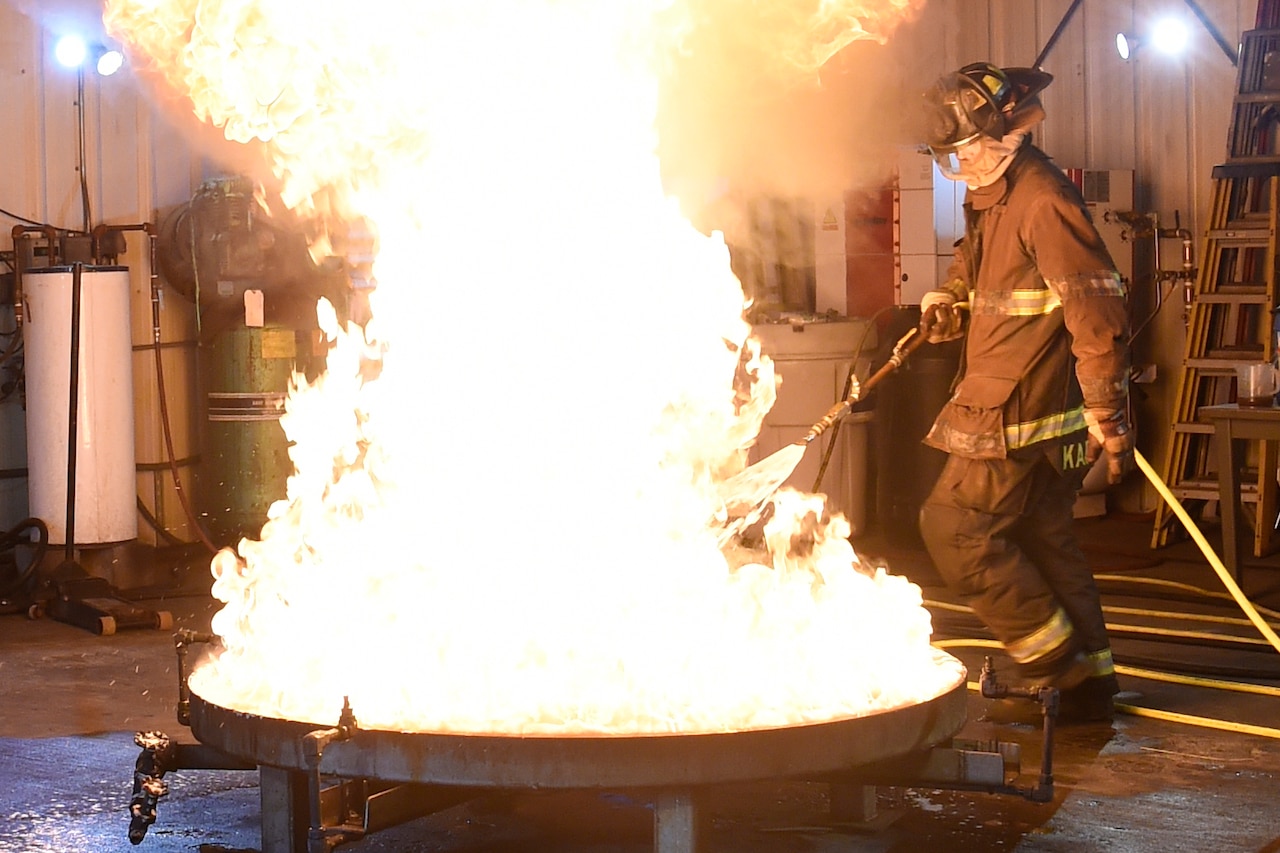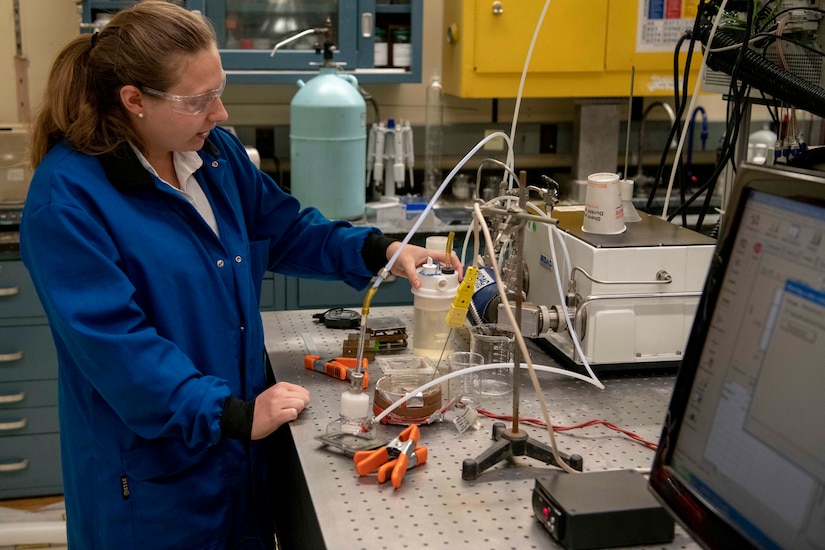May 26, 2021 | , DOD News
The Defense Department will expand community outreach regarding PFAS contamination, the deputy assistant secretary of defense for environment and energy resilience said.

Richard Kidd, provided testimony today at a virtual House Appropriations Subcommittee on Defense hearing on defense environmental restoration.
PFAS is an abbreviation for perfluoroalkyl and polyfluoroalkyl substances. PFOS, which is perfluorooctane sulfonate, and PFOA, or perfluorooctanoic acid, are two chemicals in the larger PFAS class. The chemicals are used in a firefighting foam that is known as aqueous film-forming foam, or AFFF.
The foam is used by DOD and civilian firefighting organizations and other industries to rapidly extinguish fuel fires and protect against catastrophic loss of life and property. The foam is also present in other items, such as furniture and carpet.
It has been found in soil and drinking water where AFFF has been used and is considered hazardous to human health in elevated amounts.
"Frankly, the most important outreach occurs at the local level. But it's important that senior leaders demonstrate their commitment and lead by example. I will start this on July 14, representing the department at a public town hall," Kidd said.
"The department has been able to establish and maintain a mature, effective cleanup program," he added.
Kidd said that the remaining cleanup cost of PFAS and other hazardous chemicals at contaminated sites is about $29 billion, but that figure is likely to rise if more contamination is detected.


As of March 31, the department had identified 698 installations with PFAS contamination, Kidd said. "We have completed the preliminary assessment and site investigation on 129 of these installations. Of these 129, 63 were found to require no further action, while 66 are proceeding to the remedial investigation and feasibility study."
Kidd said he expects all of the preliminary assessments and site investigations on all installations to be completed by the first quarter of 2024.
"The department has also taken quick action to address PFAS chemicals in drinking water, both on and off base. We are confident that no one is drinking water with PFOS or PFOA above the EPA's lifetime health advisory of 70 parts per trillion, where the Department of Defense is the known source," he said, referring to the Environmental Protection Agency.
Additionally, the department has a strong internal governance body in the form of the PFAS Task Force, and a record of serious engagement on this topic, Kidd added.
Kidd shared his assessment of the challenge in PFAS cleanup.
"The rate of progress is defined primarily by the rules that govern our physical world. Physics, chemistry and science, establish the realm of the possible and dictate the parameters within which we work. Based on what we know today, and known technologies, frankly, it will be years before we fully define the scope of the problem. … And after that, probably decades before cleanup is complete," he said.

Investing in science could produce new cleanup technologies or methods and could shorten that timeline, he mentioned.
"The program is legally and technically complex, but its purpose is simple: to preserve the trust with the American people, and protect the environmental bounty of this great land for current and future generations. I'm committed to this effort," he concluded.
Also testifying were Amy Borman, deputy assistant secretary of the Army for environment, safety and occupational health; Karnig Ohannessian, deputy assistant secretary of the Navy for environment; and Mark Correll, deputy assistant secretary of the Air Force for environment, safety and infrastructure.








No comments:
Post a Comment